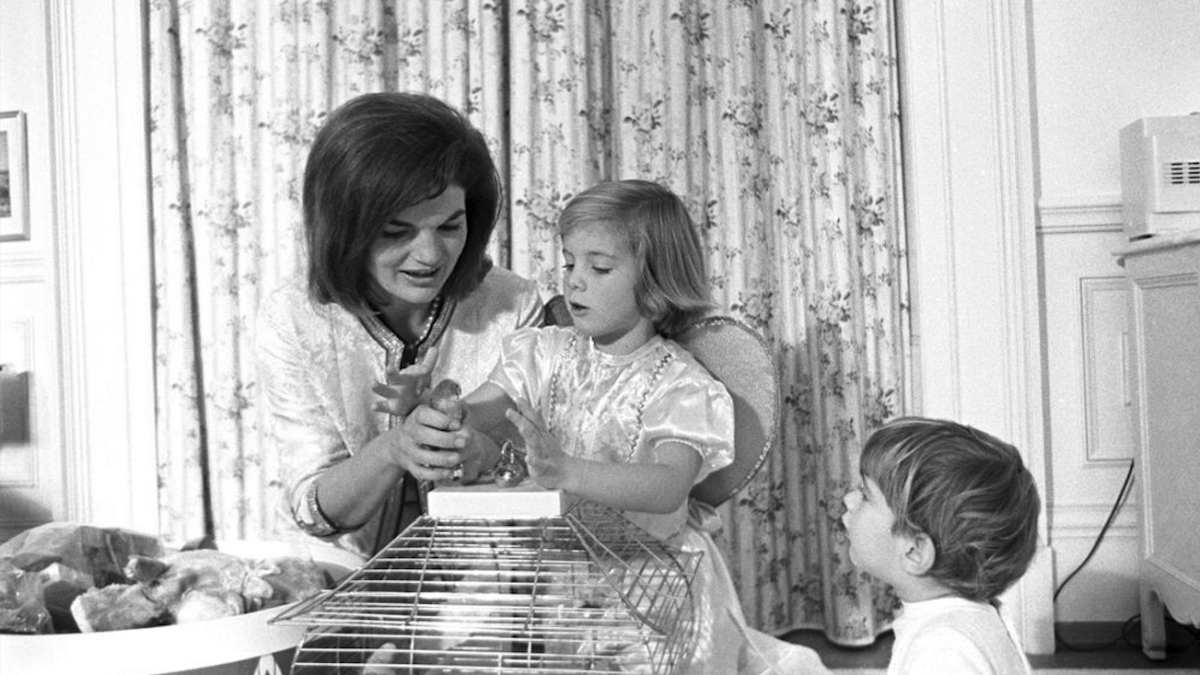Hannah Neeleman, a Utah-based cattle farmer and mother of eight, is perhaps the most popular Instagram “tradwife” — a growing category of social media influencers who reject the not-so-traditional 9-to-5 workforce in favor of homeschooling their children, homemaking, or running a family business. Though her content is entirely wholesome, she (and other tradwife accounts) are not without controversy.
In the case of Ballerina Farm, followers recently uncovered that Daniel Neeleman, Hannah’s husband, is the son of the founder and former CEO of JetBlue, whose estimated net worth is $400 million.
Her kitchen stove, prominently featured in many of Hannah’s videos where she bakes sourdough bread, farm-raised beef, and other dishes, costs a minimum of $20,000. For those who laud their simple lifestyle as cattle farmers, many felt blindsided by the wealth enabling their smooth transition to homesteading. Afterall, starting a farm requires many high-cost purchases on the front end from the land, equipment, and animals, forcing many farmers into perpetual debt.
Yet Hannah and other tradwife accounts will easily maintain their prominence going into 2024. For many women, who increasingly report “persistent feelings of sadness or hopelessness” and disillusionment with the “girlboss” lifestyle, these influencers offer an idyllic alternative to urban life. They are illuminating a deeper hunger among women, especially among Generation Z.
A quick search on Google Trends shows that the term “tradwife” gained popularity in 2018 but peaked in 2020 as the pandemic accelerated women’s return to the home. Instead of being confined to religious or ultra-wealthy women, the tradwife movement entered mainstream discussions. It offered women the chance to reclaim the ingredients of happiness — faith, family, community, and meaningful work — back from the career-focused model they grew up with.
Popular online accounts (explored here and here) tend to show women who don the clothes and lifestyle that they perceive women in a previous era embodied: shirtwaist dresses, aprons, a rejection of formal work outside the home, and a heavy emphasis on homemaking and care for children.
Instead of finding the home stuffy, boring, or trivial, many women found greater purpose and satisfaction than they previously imagined. Initially, the pandemic gave women the ultimate “permission slip” to explore the domestic realm (stay inside to stay alive). Later, popular and aesthetically pleasing tradwife accounts gave women the encouragement they needed to combat the outspoken expectations that all women, even mothers, ought to rejoin the 9-to-5 workforce.
It’s worth considering why Gen Z women, who have the most professional opportunities and fewest barriers to education, work, and politics, would flock in large numbers to tradwife influencers. No doubt the online accounts are more intense in their expressions of femininity, homemaking, or anti-feminist sentiment than the average follower, but then, this is always the case with influencers.
For Gen Z women who have observed the unhappy zero-sum game that is the battle of the sexes, many feel that the modern world, for all its promises, has failed them. They’re looking for an older, and truer, model for how to live a good life. Or, as Carmel Richardson said, “There are too many elders who give bad advice about marriage and family. I am trying to become the matriarch I want to see in the world.”
Similarly, it’s worth asking why this movement provokes many others to mockery or disgust. As one influencer said, “What if their husband leaves them? Then how will they support themselves?” For women who grew up observing the impact of no-fault divorce, family breakdown, the sexual revolution, and the rigid careerism of the 1990s, it seems as though their plan for survival is to depend on no one, especially a man, to provide for them.
The exhaustion and subsequent disenchantment this has produced in Gen Z is enough to spark a counterrevolution.
The harm is not borne equally, either. As both Aaron Renn and Mary Harrington have pointed out, the current workforce has meant that for elite or upper-class women to work, they require other women, who would rather stay home with their own children, to serve as nannies and daycare workers just to make ends meet. Many tradwife accounts encourage women, insofar as they can, to return to their own homes and release poorer women from the expectation of handling their child care, cooking, or cleaning.
Notably, a Refinery29 article recognized this appeal for minority women: “Traditional marriage is the key to Black women’s liberation from being overworked, economic insecurity, and the stress of trying to survive in a world hostile to our survival and existence.” Implicit in the tradwife model, of course, is the financial and ideological support of a husband. It requires husband and wife to work together in distinct roles toward a shared vision — one that ideally allows each the margin to flourish in their given space. In this way, tradwives represent a sort of anti-fragility that, in the words of Nassim Nicholas Taleb, is not merely resilient in the face of difficulty, but grows stronger because of it.
At their best, tradwives require more of the men around them. Rather than trying to replace the men in their lives (father, husband, perhaps employer) when they fail, such tradwives hold them accountable to provide, protect, and grow within the family. Few things could sound scarier to a woman who has been failed by a man she thought she could trust through divorce, unfaithfulness, or abandonment. Nonetheless, many women are realizing that the happiness they desire requires reliance upon a husband and other family members to succeed.
Whether it’s a corporate girlie, an academic, or a tradwife, each dreams of and relies upon a wealthy patron to support the lifestyle she wants to live. While some tradwives denounce all work “outside the home,” many run small businesses, write or blog, and contrary to the Luddite stereotype, manage savvy social media influencer accounts. They take the time and flexibility that their lifestyle offers and seek creative uses of their time that bless their family, their community, and the causes they care about.
Certainly, some aspects of the tradwife movement range from alt-right pagan beliefs to unrealistic forms of live-action role-play. At the heart of it, however, is a positive attempt by many women to embrace marriage and motherhood.
Countercultural movements tend to overcorrect to provide the next generation of women with a moderate option between the two ideological extremes of careerism and the rejection of all “paid work.” For Gen Z, the result may be that women receive the flexibility and support to pursue a family and work amenable to their goals and the demands of each season.









